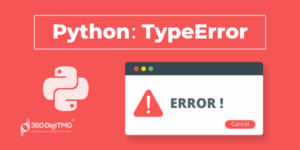Baking the perfect apple and pear strudel—with its flaky, paper-thin pastry and warm, spiced fruit filling—is an art form. It requires precision, patience, and a keen eye for detail. When a tear appears in the dough or the filling is too watery, a good baker doesn’t discard the entire effort. Instead, they diagnose the problem, apply a specific technique to fix it, and continue. In the world of software development, this meticulous process of identifying and fixing flaws is known as debugging, and much like baking, it is a critical skill that separates the novice from the master.
Writing code is an act of creation, but rarely is it perfect on the first attempt. Bugs, errors, and unexpected behaviors are the inevitable “tears in the dough” that every developer encounters. Effective Software Debugging is the systematic process of finding and resolving these defects. This guide will take you through the essential ingredients, tools, and recipes for becoming a proficient debugger. We’ll explore fundamental Debugging Techniques, dive into powerful Debug Tools for both frontend and backend development, and establish a set of Debugging Best Practices to help you build more robust and reliable applications, whether you’re working on JavaScript Development, Node.js Development, or Python Development.
The Core Ingredients: A Systematic Approach to Bug Fixing
Before reaching for sophisticated tools, it’s crucial to adopt a methodical mindset. Randomly changing code and hoping for a fix is the equivalent of adding random ingredients to a recipe—it usually makes a bigger mess. A structured approach to Bug Fixing ensures efficiency and prevents the introduction of new problems.
Step 1: Reproduce the Bug Consistently
You cannot fix what you cannot see. The first and most critical step is to find a reliable way to reproduce the error. This involves identifying the exact sequence of inputs, user actions, or environmental conditions that trigger the bug. If a bug happens “sometimes,” your initial goal is to find the pattern that makes it happen “every time.” Document these steps clearly. This is the foundation of all effective Code Debugging.
Step 2: Isolate the Problem
Once you can reproduce the bug, the next step is to isolate its source. This is a process of elimination. Start by forming a hypothesis about where the error might be. For example, “The error occurs because the API is returning null data.” Then, use various techniques to test this hypothesis. You might comment out sections of code, use a hardcoded response instead of a live API call, or use logging to inspect variable states at different points in the execution flow. The goal is to narrow down the search area from the entire application to a specific module, function, or even a single line of code.
Step 3: Understand the Root Cause and Fix It
With the problem isolated, you can analyze the code to understand why it’s failing. Don’t just treat the symptom. For instance, if a variable is null when it shouldn’t be, the quick fix might be to add a null check. However, the real question is, why is it null in the first place? Answering this leads to a more robust solution. This is where reading Error Messages and analyzing Stack Traces becomes invaluable. A stack trace is a report of the active stack frames at a certain point in time during the execution of a program, showing the path of function calls that led to the error.
Step 4: Verify the Fix and Look for Side Effects
After applying a fix, your job isn’t done. First, verify that the fix actually solves the original, reproducible bug. Second, and just as important, ensure your change hasn’t introduced new bugs elsewhere. This is where a good suite of automated tests is invaluable. Effective Testing and Debugging go hand-in-hand. Running regression tests can confirm that existing functionality remains intact. This step is crucial for maintaining a stable codebase.
The Modern Kitchen: Essential Debugging Tools and Techniques

While a systematic approach is the recipe, modern Developer Tools are the high-quality appliances that make the process faster and more effective. Different environments require different tools, from browser-based utilities for the frontend to command-line interfaces for the backend.
Frontend & JavaScript Debugging with Browser DevTools
For any form of Web Debugging, the browser’s built-in developer tools are indispensable. Chrome DevTools is a powerful suite integrated directly into the Chrome browser, offering a wide array of features for Frontend Debugging.
- The Debug Console: This is the starting point for most JavaScript Debugging. Beyond simple
console.log('message'), you can useconsole.error()for errors,console.warn()for warnings, andconsole.table()to display objects or arrays in a clean, tabular format. The console is also an interactive environment where you can execute JavaScript code in the context of the current page. - Breakpoints and the Sources Panel: This is where interactive debugging happens. Instead of littering your code with logs, you can set a “breakpoint” on a line of code in the Sources panel. When the browser’s JavaScript engine reaches that line, it will pause execution. From there, you can:
- Inspect the value of all variables in scope at that exact moment.
- “Step over” to the next line of code.
- “Step into” a function call to debug it.
- “Step out” of the current function.
- Resume normal execution.
This level of control is essential for understanding complex logic and is a cornerstone of debugging frameworks like React Debugging, Vue Debugging, and Angular Debugging.
- Network Debugging: The Network panel records every network request your application makes. This is critical for API Debugging. You can inspect request headers, payloads, response data, and status codes. If your application isn’t displaying data correctly, the Network panel can tell you if the problem is a failed API request or an issue with your frontend code’s handling of a successful response.
- Performance and Memory Debugging: For more advanced issues, the Performance and Memory panels help with Debug Performance problems. You can record a performance profile to identify slow functions or analyze memory snapshots to find memory leaks, which are common sources of application slowdowns and crashes.
Backend Debugging: Node.js and Python
Backend Debugging requires a different set of tools, as the code runs on a server, not in a browser.
Node.js Debugging
Node.js comes with a built-in debugger that can be used with Chrome DevTools for a powerful, graphical debugging experience. This is a form of Remote Debugging where the tools in your browser connect to the running Node.js process.
To start a Node.js application in debug mode, use the --inspect flag:
node --inspect index.jsThis will start your server and provide a URL. Opening this URL in Chrome will launch a dedicated DevTools instance connected to your Node.js application. You can now set breakpoints, inspect variables, and step through your server-side code (e.g., your Express Debugging session) just as you would with frontend JavaScript. This is a fundamental skill for any Full Stack Debugging effort.
Python Debugging
Python has its own built-in debugger called pdb. You can insert a breakpoint anywhere in your code by adding the following line:
import pdb; pdb.set_trace()When your script executes this line, it will pause and drop you into an interactive debugger in your terminal. From there, you can use commands like n (next line), c (continue), and p <variable_name> (print variable) to inspect the state of your application. While powerful, many developers prefer the integrated graphical debuggers found in IDEs like VS Code or PyCharm, which provide a user-friendly interface for setting breakpoints and inspecting variables for Python Errors. This is especially helpful for debugging complex web frameworks like in Django Debugging or Flask Debugging.
Advanced Pastry Arts: Specialized Debugging Scenarios

As applications grow in complexity, so do the bugs. Modern architectures introduce unique challenges that require specialized debugging strategies.
Async Debugging
Debugging asynchronous code (like Promises and async/await in JavaScript) can be tricky because the call stack doesn’t always reflect the logical order of execution. Modern Debug Tools have improved significantly in this area. For example, Chrome DevTools has an “Async” checkbox in the Sources panel that helps stitch together asynchronous call stacks, making it easier to trace the origin of JavaScript Errors in async operations.
Microservices and Production Debugging
In a microservices architecture, a single user request might travel through dozens of independent services. Microservices Debugging is a significant challenge because a bug could be in any one of them, or in the communication between them. Key strategies include:
- Centralized Logging: Aggregating logs from all services into one searchable platform (like the ELK stack or Datadog).
- Distributed Tracing: Tools like Jaeger or Zipkin trace a request as it moves through different services, providing a complete picture of its lifecycle.
Production Debugging is particularly delicate. You can’t just pause the application. This is where Error Monitoring and Error Tracking services (like Sentry or Bugsnag) are essential. They automatically capture errors, aggregate them, and provide rich context like stack traces, browser version, and user actions, allowing you to diagnose and fix issues without disrupting users. This is a key part of a robust CI/CD Debugging strategy.
Containerized Environments: Docker and Kubernetes Debugging
Containers add another layer of abstraction. For Docker Debugging, you can use docker exec to get a shell inside a running container to inspect its state or logs. For more complex Kubernetes Debugging, you can use tools like kubectl logs to view container logs, kubectl port-forward to connect a local debugger to a process running in a pod, and service mesh tools like Istio for advanced traffic inspection.

Baking a Masterpiece: Debugging Best Practices
The best way to fix bugs is to prevent them. Integrating certain practices into your development workflow can significantly reduce the frequency and severity of bugs.
Good code is its own best documentation. As you’re about to add a comment, ask yourself, ‘How can I improve the code so that this comment isn’t needed?’
This principle extends to debugging: clean, well-structured code is inherently easier to debug.
- Write Tests First: A comprehensive test suite is your first line of defense. Unit Test Debugging helps you isolate issues in small, manageable pieces of code. Integration Debugging is simplified when you have tests that verify how different parts of your system interact.
- Use Linters and Static Analysis: Tools like ESLint for JavaScript and Flake8 for Python perform Static Analysis on your code without running it. They can catch common syntax errors, stylistic issues, and potential bugs before you even save the file. This is a form of Debug Automation.
- Leverage Version Control: When you discover a regression (a bug in previously working code), Git’s
bisectcommand is a powerful tool. It performs a binary search on your commit history to quickly identify the exact commit that introduced the bug. - Embrace Logging: Effective Logging and Debugging are two sides of the same coin. Implement structured logging in your application from the start. In production, these logs are often the only insight you have into how your application is behaving.
Conclusion: From Frustration to Fulfillment
Debugging is an unavoidable part of a developer’s life, but it doesn’t have to be a frustrating chore. By approaching it as a systematic investigation rather than a chaotic scramble, you can transform it into a rewarding intellectual challenge. Just like baking a perfect Apple & Pear Strudel, successful Application Debugging is a craft honed through practice.
By mastering a structured process, becoming proficient with modern Web Development Tools like Chrome DevTools, and embracing best practices like comprehensive testing and logging, you can significantly reduce the time spent hunting for bugs. This allows you to focus on what truly matters: building elegant, functional, and reliable software that delights your users. The next time you encounter a bug, remember the baker’s mindset: stay calm, diagnose the issue, apply the right technique, and create something wonderful.













